Momentum and On-Chain Data
200-Week Moving Average
As shown in the chart, BTC typically bottoms in bear markets when the price touches (or falls below) the critical 200-week moving average (200 WMA), which is currently at $43,617.
When BTC bottomed in late 2022, the 200 WMA was $23,757.
At the bottom of the 2018 bear market, the 200 WMA was $3,158.
Where will the 200 WMA be in the next bear market?
This depends on future price movements, but we anticipate it will ultimately fall in the range of $60,000 to $70,000.
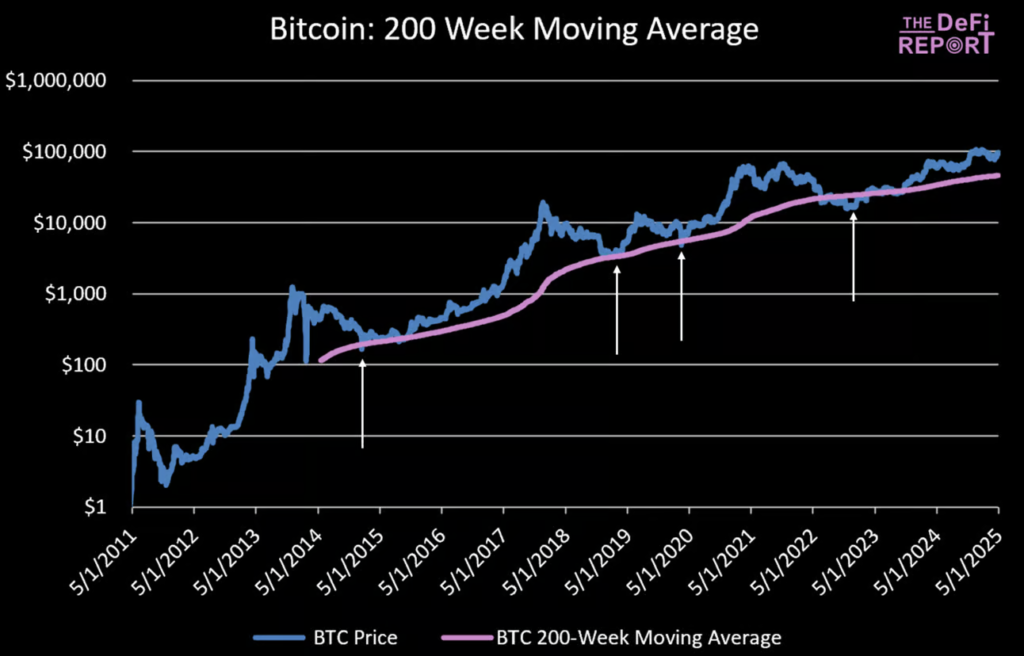
Source: The DeFi Report, Investing.com
Realized Price
Realized Price is a proxy indicator for the average cost of each BTC currently in circulation.
It is calculated by summing the market prices of each BTC (technically each UTXO) at its last on-chain movement.
Limitation: This indicator does not account for BTC held in ETFs or centralized exchanges (18.7% of circulating supply).
Nevertheless, this indicator has proven reliable in identifying BTC bottoms, as prices tend to gravitate towards the Realized Price during bear markets and can fall below it under extreme conditions.
As shown in the chart, this pattern is consistent across each cycle.
The current Realized Price is $44,576 and continues to rise.
We expect the Realized Price to continue increasing.
Reason: The Realized Price significantly increases when long-term held BTC is sold. For example, if someone transfers BTC last moved at $20,000 to a buyer today at $77,000, it will increase the realized market cap, thus pushing up the Realized Price.
How high will the Realized Price go?
This depends on price movements and long-term holder behavior, but we estimate it will rise to around $60,000 by year-end.
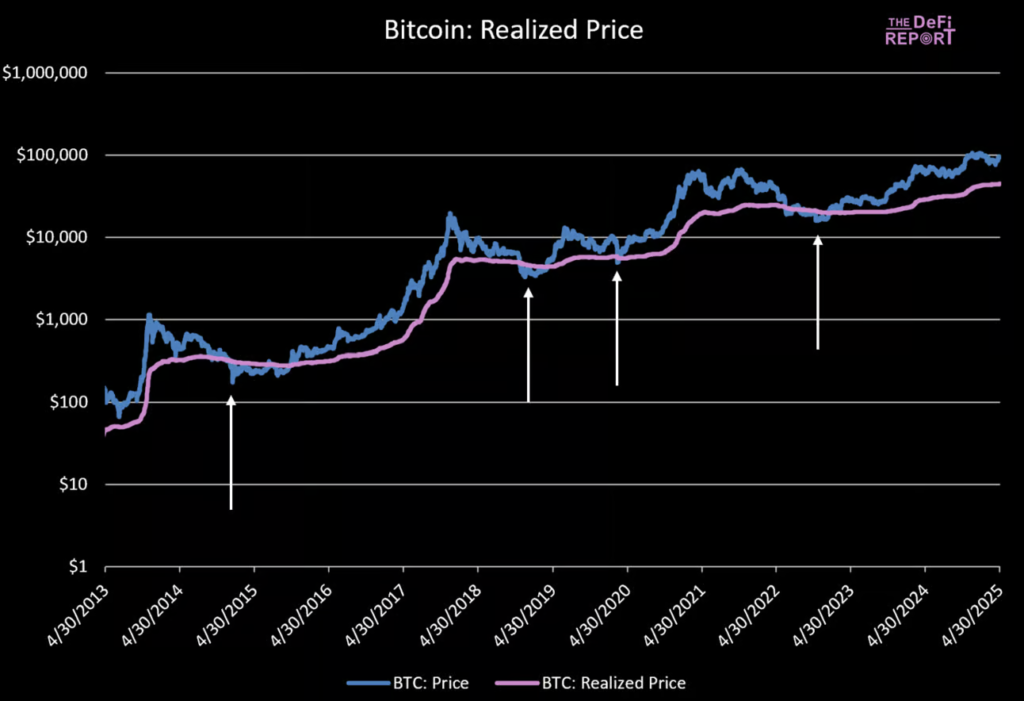
Source: glassnode, DeFi Report
Cost of Mining 1 BTC
BTC is a digital commodity, but its trading cycle is similar to physical commodities like oil.
In bear markets, the market price tends to bottom when production costs exceed the price of newly issued BTC.
Reason: When prices fall below production costs, many miners are forced to shut down machines or sell BTC inventory to cover operational expenses. This typically occurs after a significant BTC price drop, so "miner capitulation" often marks the bottom.
Currently, the average cost of mining 1 BTC is approximately $90,000 (calculated by Blockware) and estimated at $91,700 by Macro Micro.
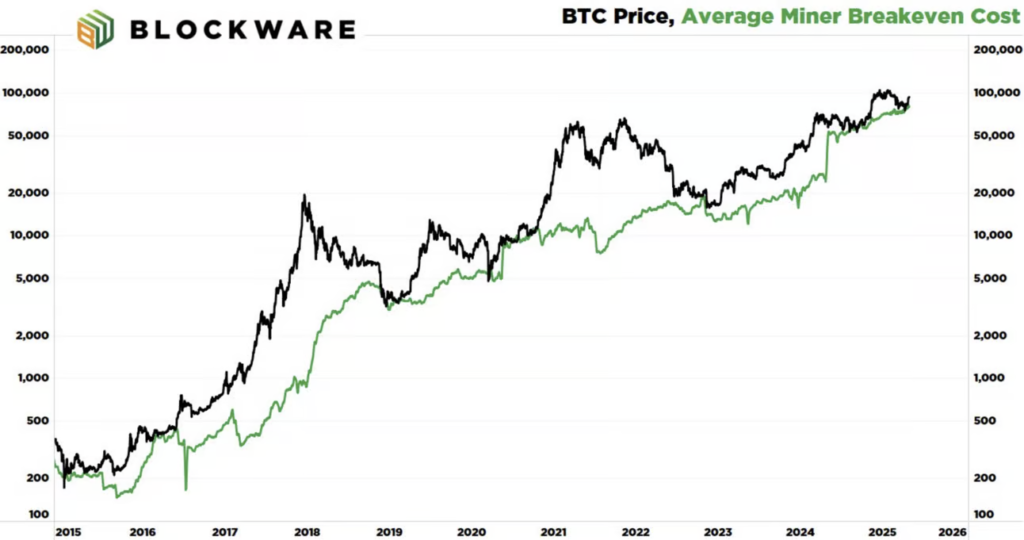
Source: Blockware Solutions
Why are costs so high?
Hash Rate Surge: Hash rate has nearly doubled in the past year, increasing competition and raising the cost of mining each block reward.
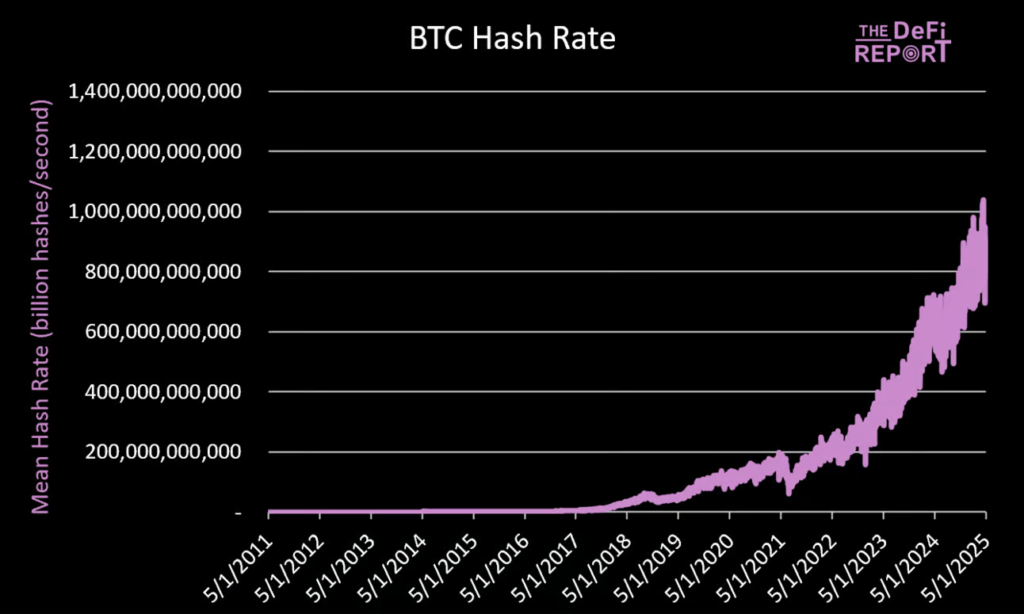
Data: glassnode, DeFi Report
BTC Halving: Last April's halving reduced new BTC issuance by half, effectively doubling the resources (energy costs) miners need to mine 1 BTC.
We also calculated the direct energy costs of the top 10 listed BTC miners:
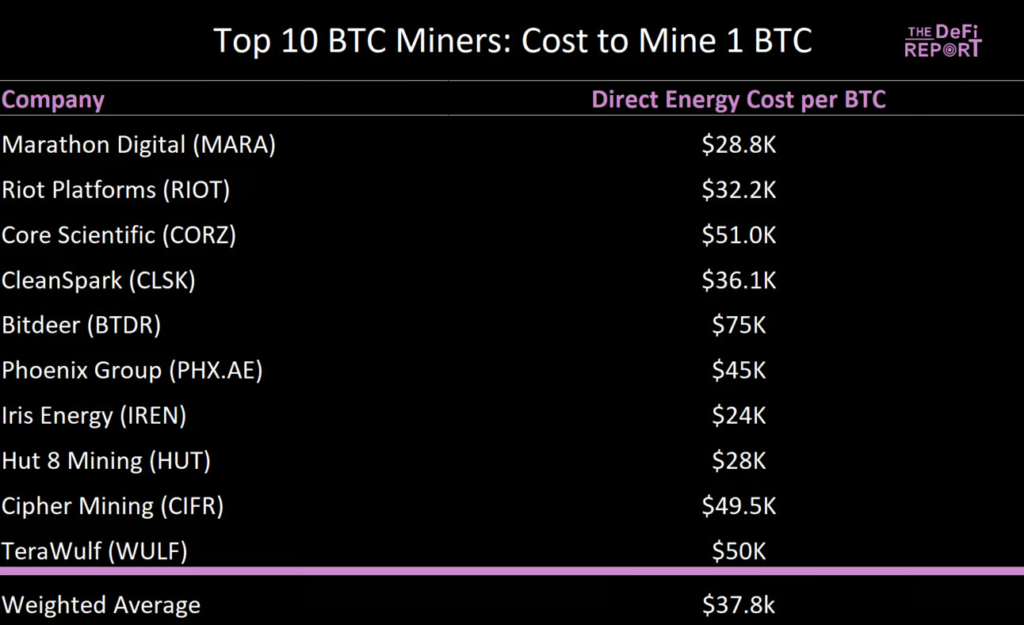
Conclusion:
The largest miners with scale advantages have a weighted average production cost per BTC far below the network average. We believe BTC will bottom when market prices approach these companies' production costs, likely aligning with the Realized Price and 200-week moving average.
Relative Strength Index (RSI)
RSI is a momentum oscillator measuring the speed and change of market price movements.
RSI > 70: Asset may be overbought.
RSI < 30: Asset may be oversold.
As shown in the chart (blue arrows), BTC's RSI has fallen below 30 four times in the past year, each time signaling a price trend reversal.
When market prices converge with the 200 WMA, Realized Price, and mining costs, we look for RSI below 30 as confirmation of oversold conditions and an opportunity to buy BTC at fair value.
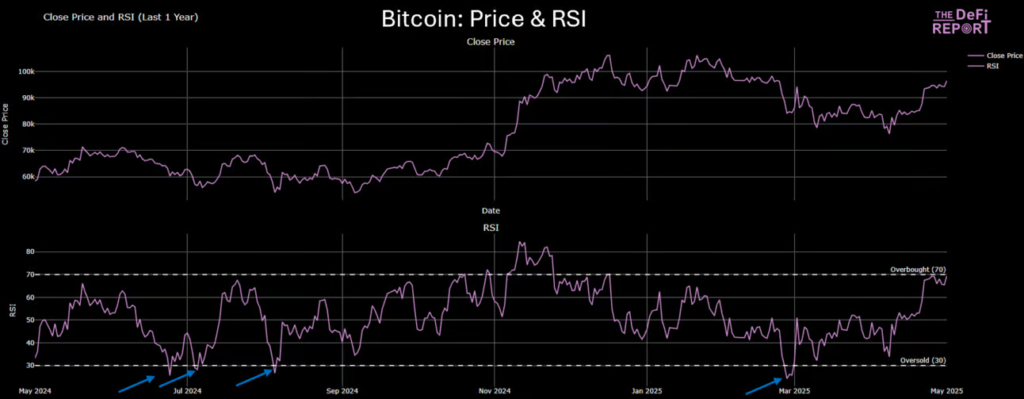
Qualitative Signals
In addition to the four main data points mentioned above, we also focus on the following qualitative signals to identify the bottom of Bitcoin:
Hidden Leverage Exposure: In the previous cycle, GBTC premium, Terra/Luna collapse, and FTX fraud exposed leverage issues.
Protocol Hacks / Centralized Exchange Failures.
"Coinless" Becoming Active Again: Critics' voices grow louder.
Crypto Twitter Becomes Quiet: Tourists leave, community activity declines.
Crypto Podcast and Media Viewership Decreases.
Advertising and Excessive Spending at Crypto Conferences Reduce.
Coinbase's New and Active Users Significantly Decline.
Given the relationship between the Trump administration and the crypto industry in this cycle, more negative news/headlines are expected during the bear market as political opponents seize the opportunity to speak out.








